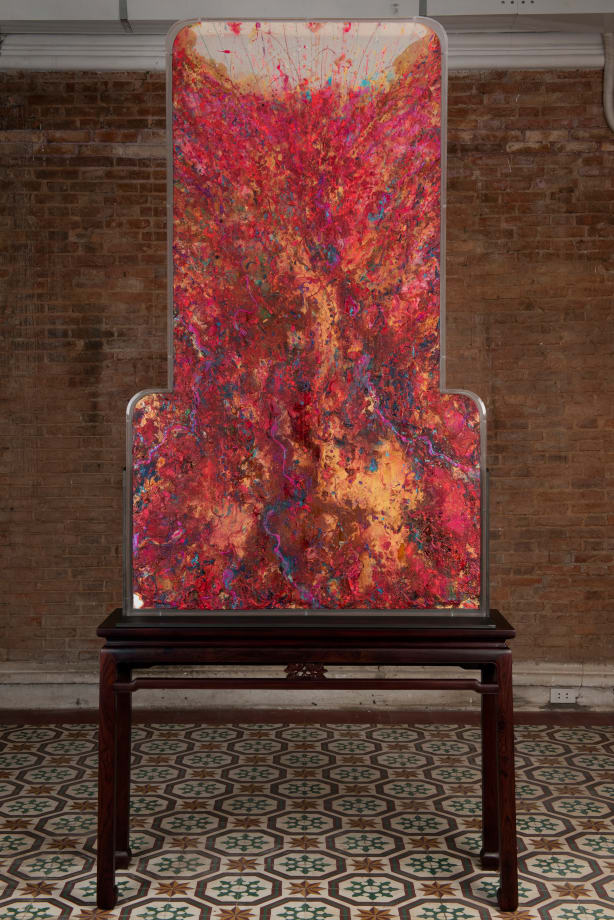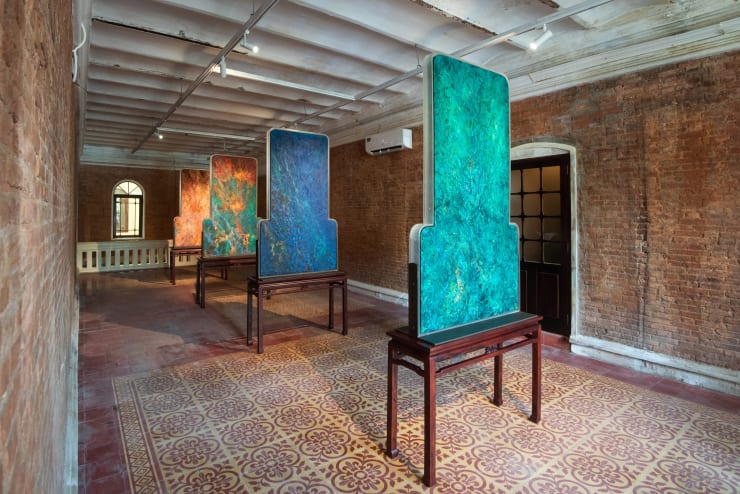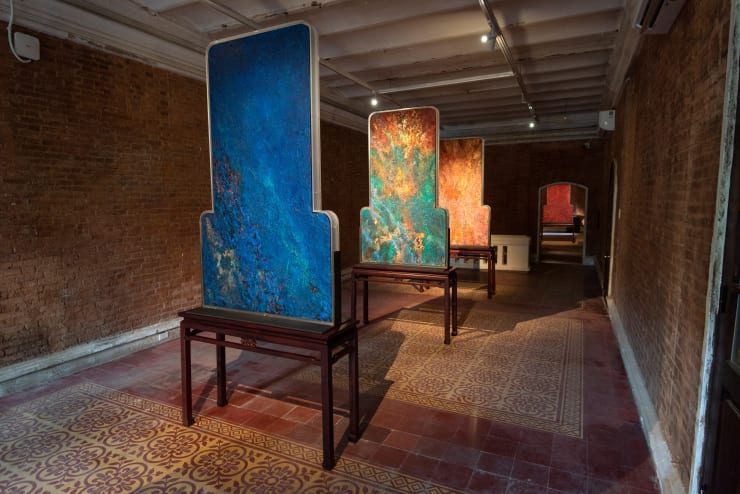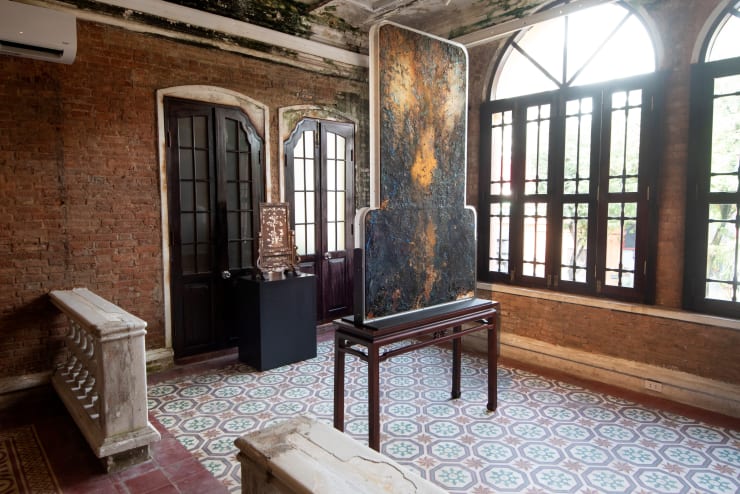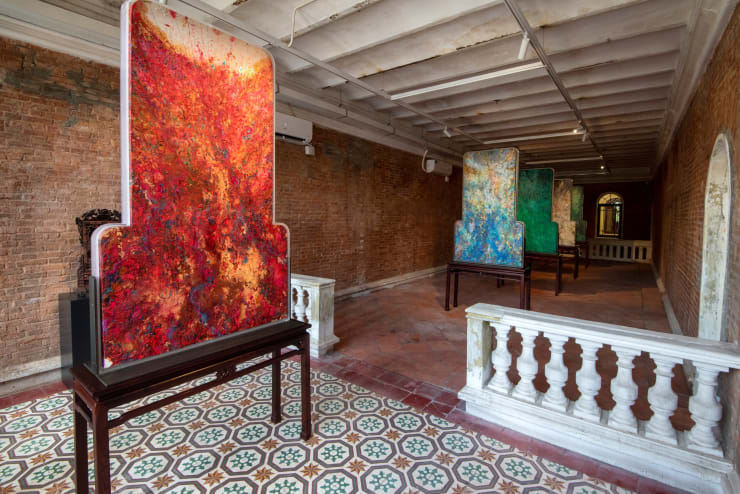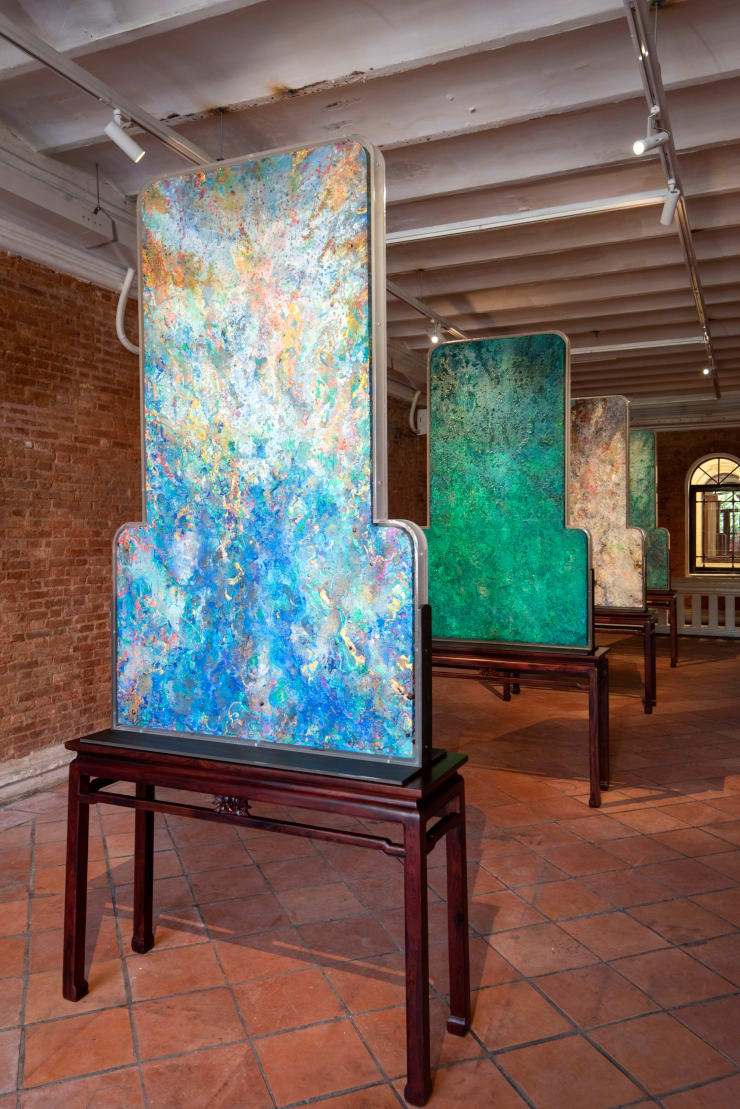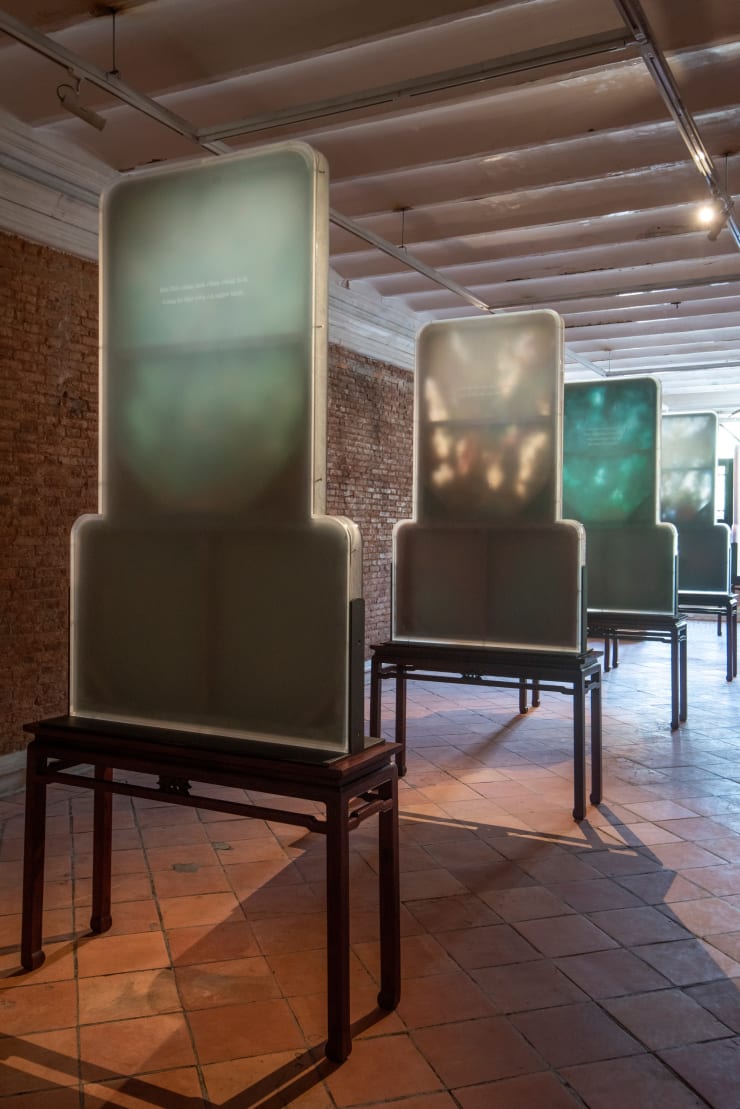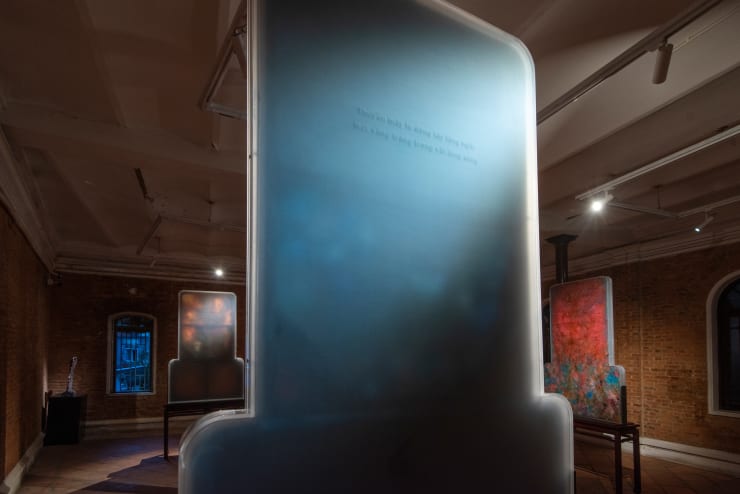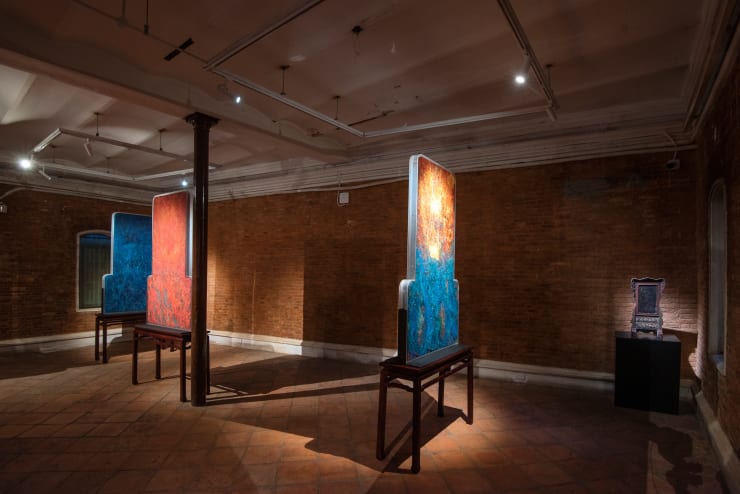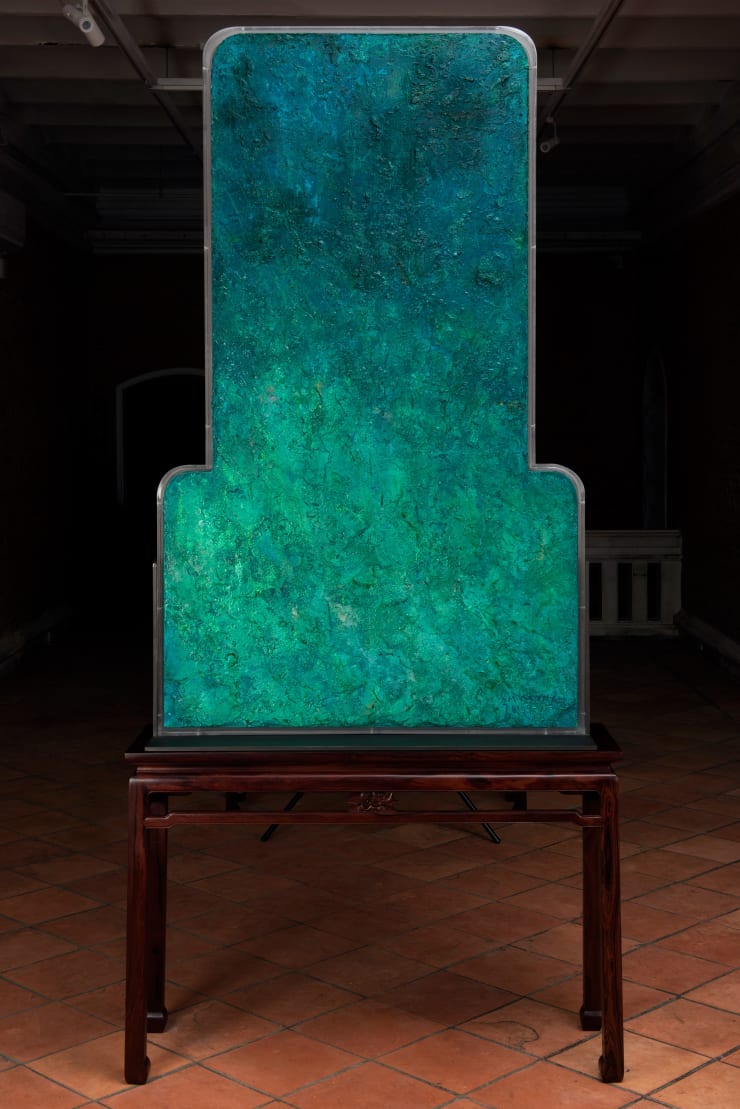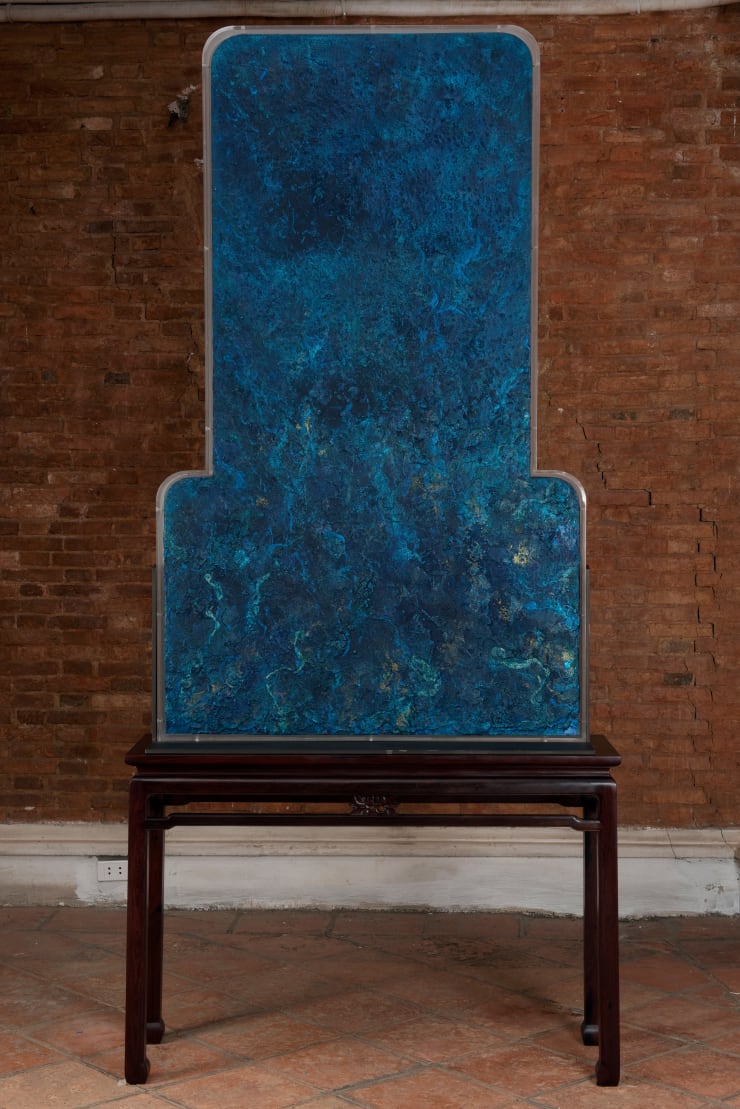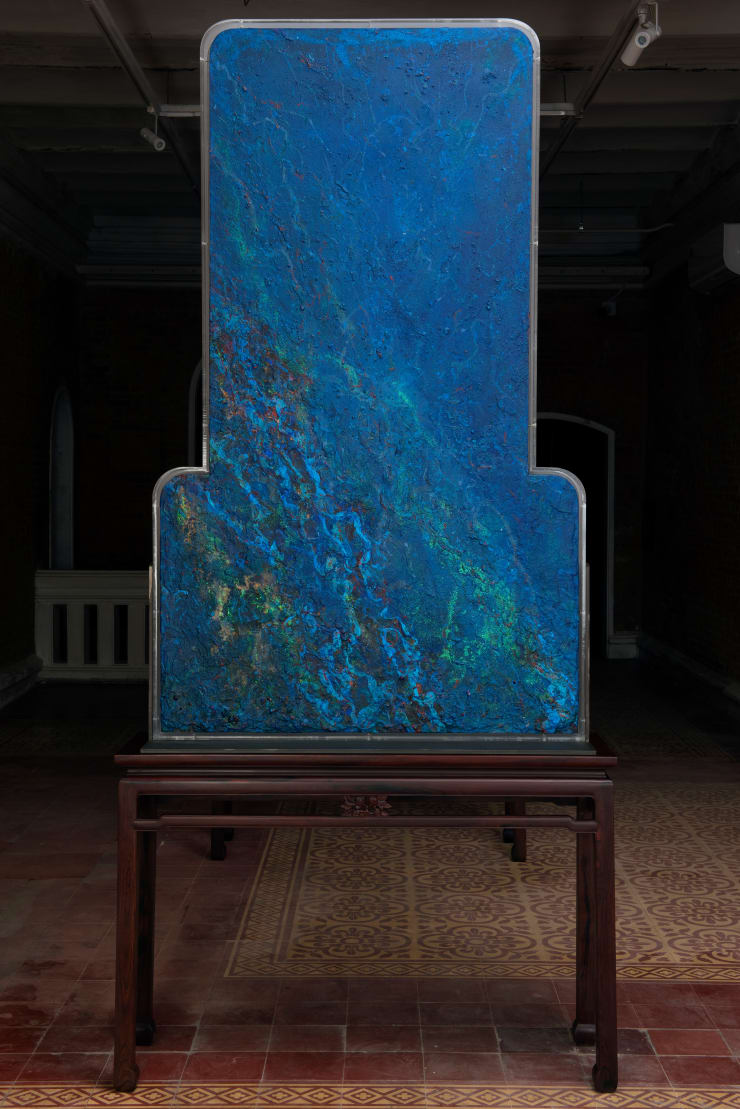Kìa non non, nước nước, mây mây: Ha Manh Thang
Past exhibition
Overview
Galerie Quynh is thrilled to present Hà Mạnh Thắng's solo exhibition Kìa non non, nước nước, mây mây in a 19th-century colonial-style building at 29 - 31 Tôn Thất Thiệp that was once the guesthouse for Sri Thendayuthapani — the Hindu temple located just opposite. As the following chapter of Thắng's previous solo show at the gallery, The Reflection, the exhibition features 16 experimental works in the Đối Ảnh series that illustrate the artist's continued fascination with materiality, time, and the excavation of history and cultural heritage.
The exhibition title borrows from Hương Sơn Phong Cảnh Ca (Huong Son Landscape Song) by the renowned Nguyễn Dynasty intellectual Chu Mạnh Trinh. The poem encapsulates well the complexity of emotions when one is confronted by the magnificence of nature. The same sentiment can also be observed in Thắng's artistic practice. Over the years he has focused on exploring the polysemic nature of landscape, and the evolution of viewing landscape in art from ancient times up to the present.
On one of his recent trips to the Vietnam National Museum of History in Hanoi, Hà Mạnh Thắng chanced upon an ancient stone stela, which is said to date back to the Sui dynasty (581 - 618). In the history of East Asian culture, a stela usually consists of three components: the head; the curved base, which usually comes in the shapes of tortoise shell and lotus; and the body, which was used to record important and influential information such as moral principles, literary prose, and notable achievements. Hà Mạnh Thắng adopted its shape as the symbol of timelessness and eternity for the works featured in this exhibition.
Thắng sees silk and canvas not as materials, but as shape-shifting surfaces. Rejecting traditional treatments, Thắng has transformed silk into a sturdy surface on which many layers of pigment can anchor. This approach, as Asian Art History Professor Nora Taylor observes, has 'turned silk into stone.' From the back of the painting, the transparency of the silk's surface changes depending on the light. The painting is placed in a matte opaque plexiglass frame of the same shape making the presence of silk and its transparency even more subtle. How Thắng has worked the surfaces so that the front looks like stone, while the back shimmers with hints of light, according to Dr. Taylor, begs for the reconsideration of silk's duality:
How can silk be both transparent and opaque? How can it be both light as a feather and look as heavy as a stone? The dual nature of the universe reveals itself like the opposite forces of yin and yang. And, like scholars' rocks, Thắng's paintings offer us a means of contemplating the world in microcosmic form.
Each artwork evokes landscapes inspired by the artist's favourite poems by illustrious poets and scholars from the Tang and Song Dynasties in China, and the Nguyễn Dynasty in Vietnam, as well as Tản Đà — Thắng's all-time favourite pre-modern Vietnamese poet. Hà Mạnh Thắng has always been inspired by the way landscape is portrayed as metaphorical imagery in ancient poetry and antiques. When propped on Nguyễn Dynasty — inspired wooden tables, these paintings look like a giant screen that can be viewed from either side.
These artworks assume the form of a sculpture and a history-laden artefact, and in turn transform the historic Tôn Thất Thiệp house into a space for the discussion of past legacies. Kìa non non, nước nước, mây mây belongs to Thắng's larger series Circle of Time (2016 - present) and reflects his commitment to the themes of eternity and timelessness. It is where art can be a reflection of the past, of the unconscious mind or of lost memories.
Installation Views
Works
-
 Ha Manh Thang, Autumn Inspiration #1, 2022
Ha Manh Thang, Autumn Inspiration #1, 2022 -
 Ha Manh Thang, Jade Autumn, 2022
Ha Manh Thang, Jade Autumn, 2022 -
 Ha Manh Thang, Autumn Inspiration #2, 2022
Ha Manh Thang, Autumn Inspiration #2, 2022 -
 Ha Manh Thang, Autumn Inspiration #3, 2022
Ha Manh Thang, Autumn Inspiration #3, 2022 -
 Ha Manh Thang, Boundless Green Forest, 2022
Ha Manh Thang, Boundless Green Forest, 2022 -
 Ha Manh Thang, Cold Midnight Autumn, 2022
Ha Manh Thang, Cold Midnight Autumn, 2022 -
 Ha Manh Thang, Heaven and Earth receding in the distance, 2022
Ha Manh Thang, Heaven and Earth receding in the distance, 2022 -
 Ha Manh Thang, Infinite Solitude, 2022
Ha Manh Thang, Infinite Solitude, 2022 -
 Ha Manh Thang, Fading Spring, 2022
Ha Manh Thang, Fading Spring, 2022 -
 Ha Manh Thang, Frosty breeze, 2022
Ha Manh Thang, Frosty breeze, 2022 -
 Ha Manh Thang, Waves of emerald, ripples of pearl, 2022
Ha Manh Thang, Waves of emerald, ripples of pearl, 2022 -
 Ha Manh Thang, Snow, fog and clouds, 2022
Ha Manh Thang, Snow, fog and clouds, 2022 -
 Ha Manh Thang, Kìa non non, nước nước, mây mây, 2022
Ha Manh Thang, Kìa non non, nước nước, mây mây, 2022 -
 Ha Manh Thang, Quiet landscape, 2022
Ha Manh Thang, Quiet landscape, 2022 -
 Ha Manh Thang, Distant memory, 2022
Ha Manh Thang, Distant memory, 2022 -
 Ha Manh Thang, Secluded night, 2022
Ha Manh Thang, Secluded night, 2022
